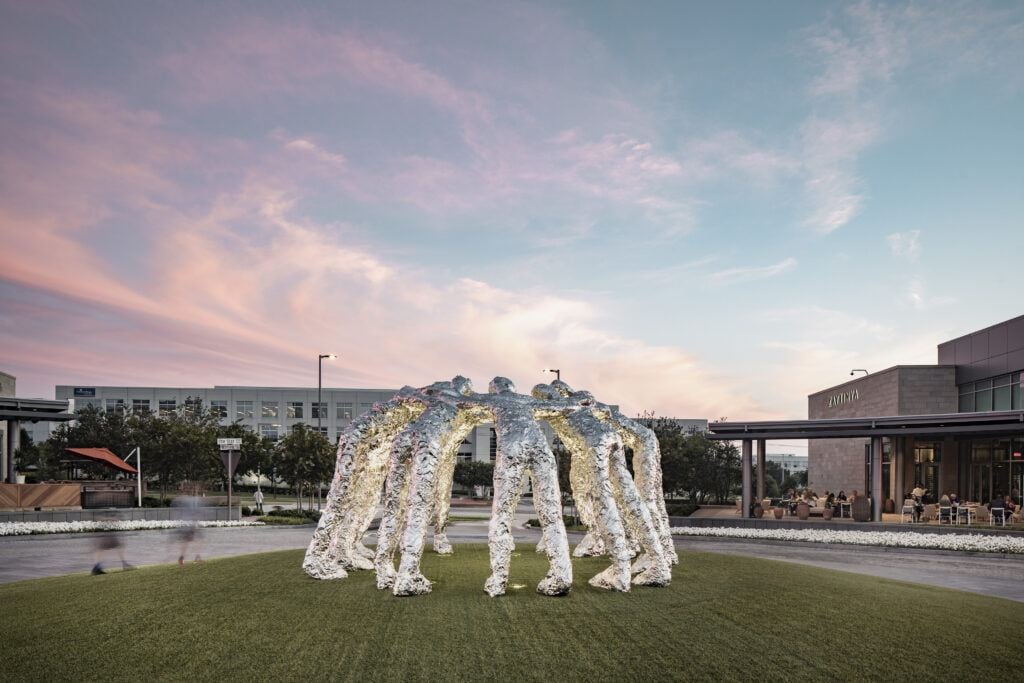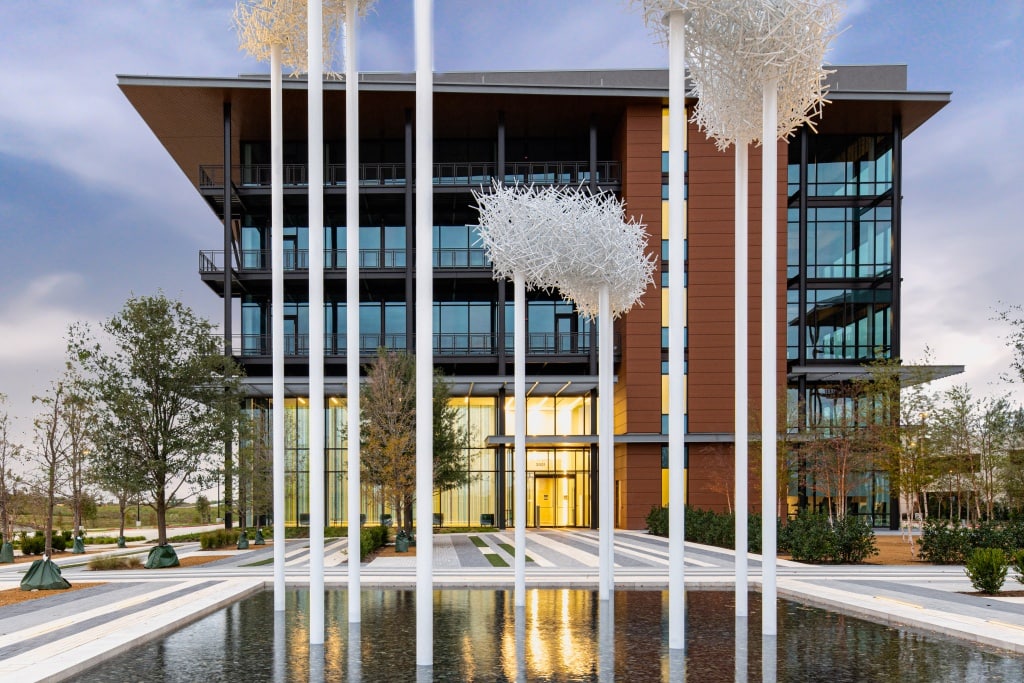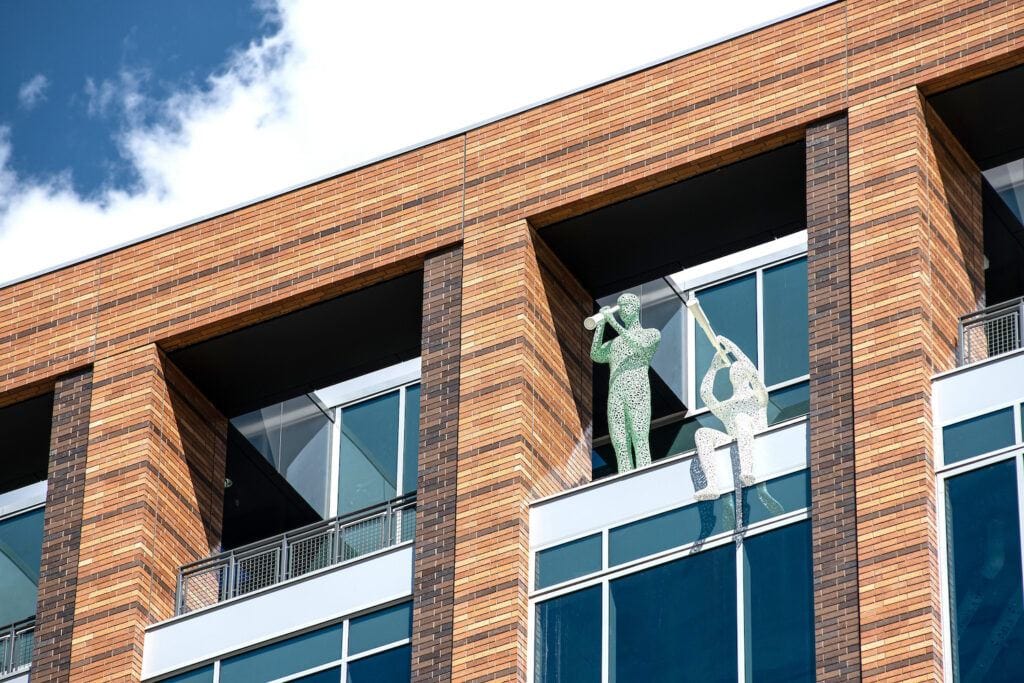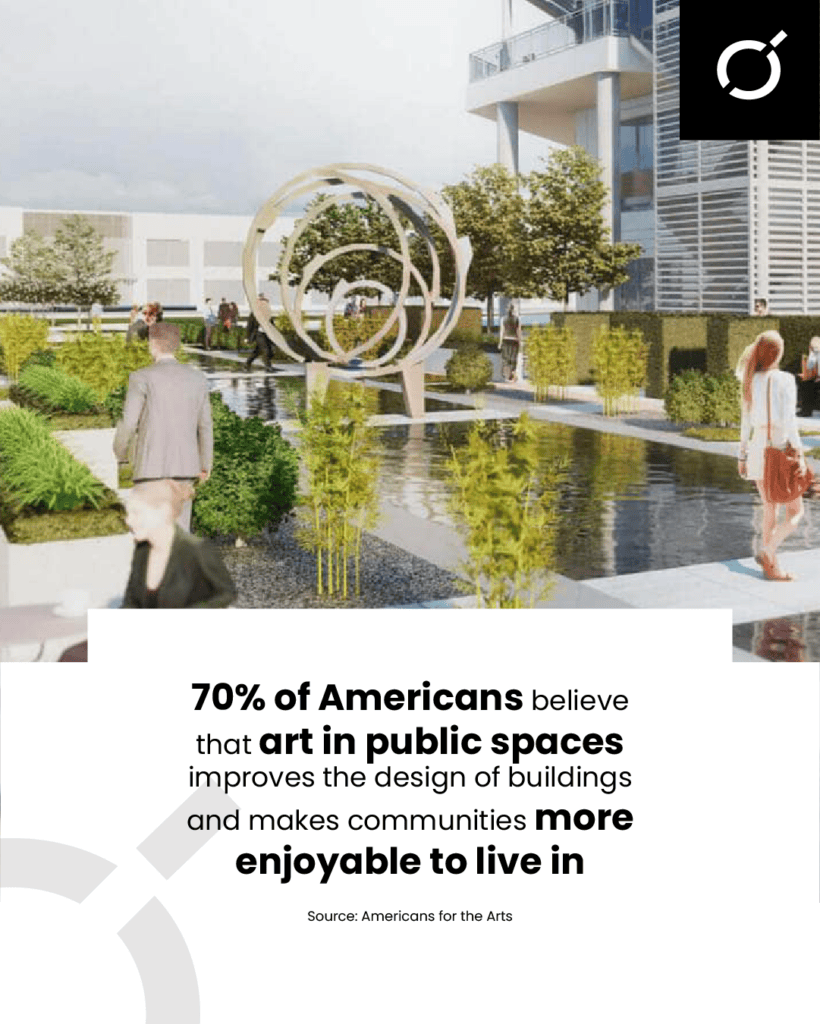An Architect’s Perspective on Enhancing Spaces
The balance between form and function is crucial in creating a successful project in architectural design. As architects, we strive to create not only beautiful buildings but also ones that integrate holistically within their environment. Incorporating art plays a significant role in this process, adding an experiential layer to the design.
Through art, architects can enhance the overall experience of a building by incorporating different senses, such as touch and feel. Art can also serve as a wayfinding tool within the built environment. Overall, integrating art in architecture and design makes a building more visually appealing and enhances the overall experience and functionality of the space.
This article explores the impact of blending art and architecture, how art shapes how we experience environments, incorporating art and sculpture in the design process, and showcasing the importance of art in architectural design.
How Art Shapes How We Experience Environments
Art and architecture are symbiotic in that they play off each other to create a cohesive and dynamic experience for the viewer. This is particularly true in the design of lobbies, where the scale of the space and the placement of art can create a sense of grandeur or intimacy. The color and style of the art also play a crucial role in the overall feel of the space, with some pieces being more whimsical and playful while others are more calming and serene.

Water features, such as fountains, can also play a significant role in the design of a lobby, creating a sense of movement and sound that interacts with the space uniquely. This is an homage to the playful nature of parks, where the interaction with the space evokes youthfulness and nostalgia.
When it comes to bringing art and architecture together, it is essential to consider the context of the project and the intended user experience. The scale of the project and overall design aesthetic should inform the selection of art, aiming to create an aspirational and thought-provoking experience for the viewer.
The building can be considered a canvas for art and a museum-like space. The art should complement the building, not overpower it. This creates a delicate balance between the two elements, where the art enhances the overall design of the building. Billingsley, a locally-based development company specializing in mixed-use, master-planned communities, often has specific ideas for the art display. The designers must consider these ideas while ensuring the art syncs with the overall design concept.
Incorporating Art and Sculpture in the Design Phase
When it comes to incorporating art into architecture, the conversation starts with the type of piece that will be featured. Is it a sculpture, a 3D piece, or a flat 2D piece that will hang on a wall? These decisions impact how people will interact with the art and how it will fit within the scale of the space.

In recent years, digital art has also entered the conversation. Pieces can be interactive or visually interactive, adding an extra layer of complexity to the design process. For example, a TV or series of screens may be incorporated into a large wall, but the specific content displayed is only sometimes known upfront.
At O’Brien Architects, we like to introduce the possibility of incorporating art early in the design process. Our designers have a great time thinking of ways to incorporate art that adds to the project’s story, and it gives the design a soul, a wink, or a nod. This can include engaging a local artist to create a mural, incorporating a structural piece into the canopy, or working with a third-party vendor to design an aluminum piece.
It’s exciting to see where these ideas started and how they evolved throughout the design phase. We can collaborate and create truly unique and dynamic spaces by introducing the possibility of incorporating art early on.
Enhancing Architectural Design
3401 + 3501 Olympus Offices
We take great pride in designing properties that are not only functional but also visually stunning. 3401 + 3501 Olympus is a prime example of this philosophy.

Developed in partnership with Billingsley, these properties feature courtyard areas outside the two buildings. The art in these spaces was considered an integral part of the design process, resulting in unique and eye-catching elements such as cloud sculptures and a reflecting pool that converges on the space. One of the most exciting aspects of this project was how the art interplays with the building’s tenants and users.
2999 Olympus Office
In our more recent project, 2999 Olympus, we incorporated two sculptures of “observers” with telescopes on the 10th-floor balcony. These observers were positioned so that one was looking up and the other was looking down. The idea behind this display is to allow tenants to observe and appreciate the surrounding art while also being observed themselves.

This creates a unique and interactive experience for the tenants, as they become part of the display and can participate in the observation process. This interactive element can add a layer of engagement and enjoyment for the tenants and draw attention to the building and its features.
Art plays an essential role in shaping the overall experience of a building and strives to incorporate it in a meaningful and impactful way. Additionally, as architects, we are aware that we are often anonymous figures in the grand scheme of things and take pleasure in subtle ways of celebrating our contribution to a project. We were incredibly honored when Billingsley included our names in the lobby of one of our buildings to commemorate our work.
Creating and appreciating art, like architecture, is a deeply personal and subjective experience. We find great joy in that people may have different interpretations and reactions to the art pieces we incorporate into our buildings. Still, the coming together of relationships, creativity, and teamwork makes the experience truly special for us.

Art Makes the Difference
In conclusion, integrating art in architectural design enhances the overall experience and functionality of a building. It allows architects to incorporate different senses, such as touch, taste, and feel, and can also serve as a wayfinding tool within the built environment. The balance between form and function is crucial in creating a successful project, and incorporating art play a significant role in achieving this balance.
We take pride in designing functional and visually stunning properties; incorporating art is essential to this process. Ultimately, the goal is to create an aspirational and thought-provoking experience for the viewer, where the art complements the building rather than detracts from it.
Build Your Brand Together
Creating exceptional experiences starts with a trusted advisor who maximizes every opportunity to create memorable moments. Our team at O’Brien embraces a collaborative design approach that is open, interactive, and imaginative.
To us, realizing your vision takes more than a process and result. It takes a team to guide the journey and form relationships along the way. Let’s build your brand together.
